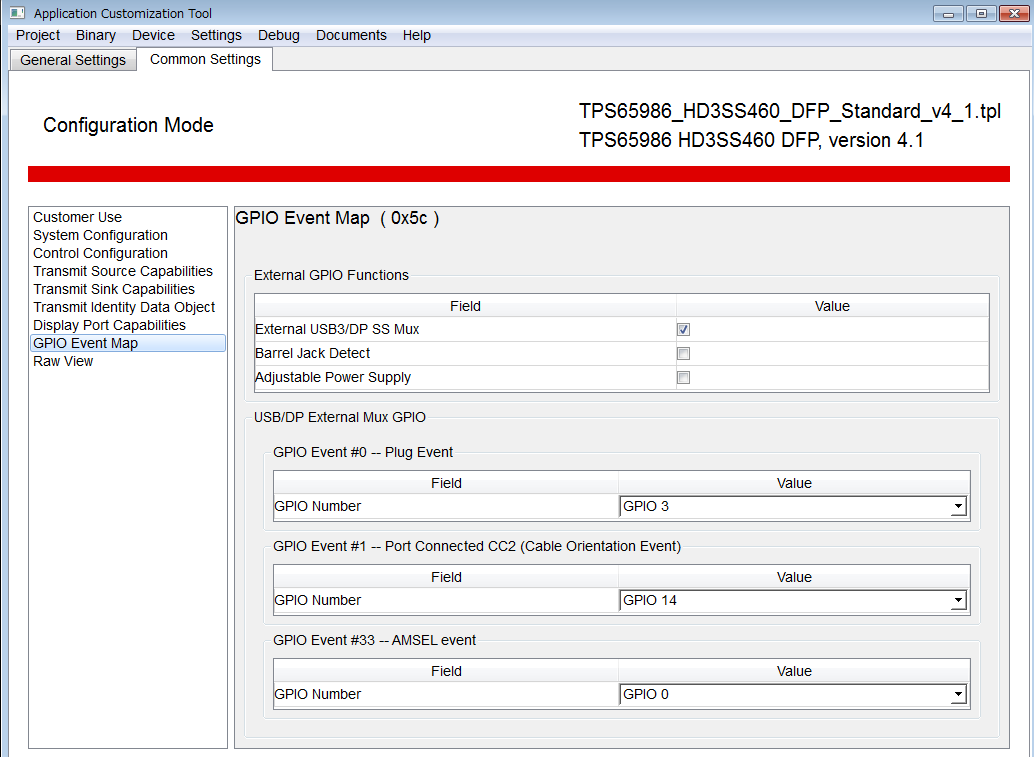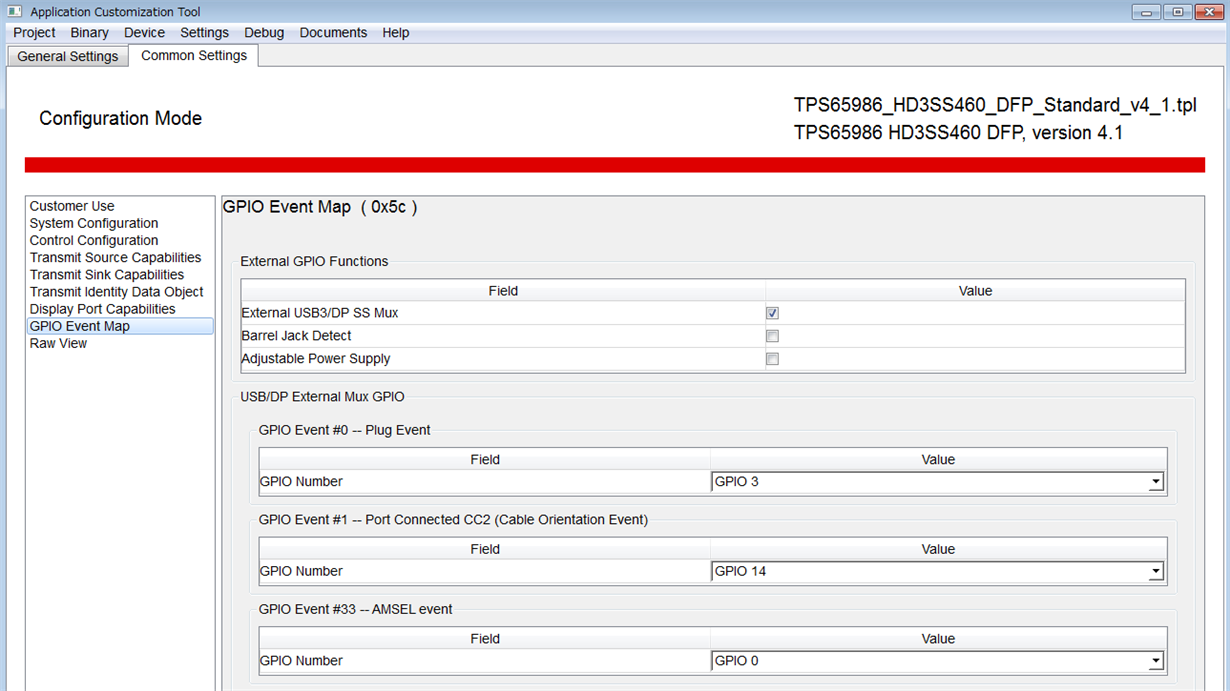Other Parts Discussed in Thread: TPS65987D
Hi Team,
My customer is designing TPS65986 with Application Customization Tool version 4.01.
Project -> New Project -> TPS65986 -> Standard (Recommended) -> DFP only
GPIO Event Map in Common Settings shows the folowing.
Is there any way to set push-pull output for any GPIOx?
Is it required to select "Advanced " in selecting project as the following?
Project -> New Project -> TPS65986 -> Advanced -> DFP only
Best Regards,
Yaita / Japan disty





